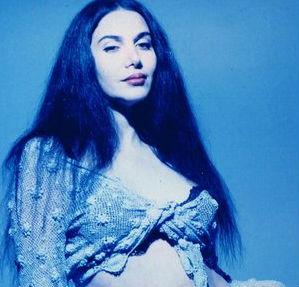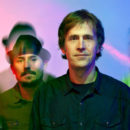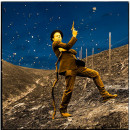When Canadian artist Lydia Ainsworth debuted lead single “The Road” from her upcoming 11-track album, Darling of the Afterglow, the song and its accompanying video garnered positive reception. Fascinating in its divergence from standard pop conventions, “The Road” makes use of sparing beats, piano notes, and a helping of electronic sounds that collide with layered vocals for a dreamlike construction, expressing descriptive lyrics:
As a hawk's deflected path/ meets the end within another end
As two mirrors guide the form/ let's go on and on and on once more
Thought-provoking as this opener is, the album’s highs lie further in.
Frontrunner for follow-up single, “What Is It?” continues the pattern of having an unconventional makeup, albeit with more of a pop sound than the former song. Incorporating piano, guitar, banjo and electronic sounds, it has a fresh energy that takes on added liveliness by the second verse as the banjo becomes a stronger centerpiece, while the lyrics wrap around a catchy chorus. It's a splendid, well-produced track that gets better each listen.
Soon after, the album slows things down in “Afterglow,” with echoing sounds and light production that give Ainsworth's gentle vocals a space to captivate, as she paints an intriguing lyrical story (“Here in the hall of a million doves burning bright/ lighting the way, barring the sun”). For all intents and purposes, “Afterglow” represents the guiding vision for the album, best conveyed in the lyric, “To play it safe is not to play at all.”
From then on, experiments become more overt. On “Into the Blue,” Ainsworth sings metaphorically about letting go, dabbling with an R&B backbone that surfaces unexpectedly when the chorus hits and a beat forms, where previously a collection of pulsating sounds give an airy vibe. With “Open Doors,” experimentation is twofold: Ainsworth's vocals operate on two planes, where lyrics are simultaneously sung and whispered; and by the midway point, the song moves from soft guitar strings and indistinct sounds to a more bass-driven production with raised yet graceful vocals. A similar approach is evident on “Wicked Game”—an inverse of “Into the Blue,” with a message of determined resistance arising from sad realization—where layered vocals are of two main varieties, one being distorted and low-pitch to meet the melancholic vibes brought on by low piano notes.
Darling of the Afterglow is a varied and intriguing collection of pop-skeleton experiments that spell an almost sensory experience.
Two tracks most closely fitting the synthpop moniker vary in success. Early track “Ricochet” has a great flow that makes for an accessible listen, featuring a steady stream of synths, guitar, drums and twitchy electronic sounds that blend well with Ainsworth's precise vocals. “I Can Feel It All,” while sharing the lyrical appeal of other tracks, features a busy production that doesn't gel as well, with the song morphing as heavier electronic sounds, guitar and drums take hold but without the fluidity seen elsewhere on the album.
“Nighttime Watching” is the perfect encapsulation to close the experimental experience, using vocal layering and engaging lyrics to good effects, while being dominated by offbeat electronic and occasional violin strings. It lacks a notable climax but remains a mesmerizing creation on the whole.
What this all translates to is a satisfying record that doesn't rest firmly within the pop genre, thanks to the interwoven folk, classic and alternative influences as well as the overall lyrical depth. Darling of the Afterglow is a varied and intriguing collection of pop-skeleton experiments that spell an almost sensory experience. Its poetic storytelling and creative navigation of genre conventions demand multiple listens.
8,975 out of 10,000 Rawckus Kung Fu Throwing Stars













